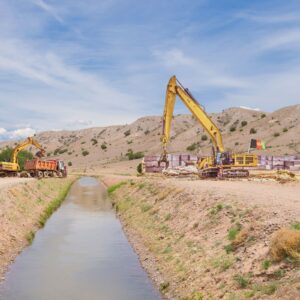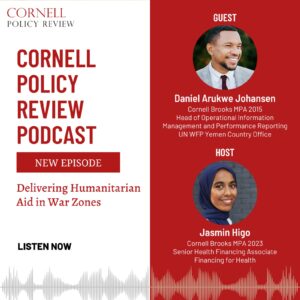A floating garden in Inle Lake, Shan State, Myanmar. (Source: Jade M. Algarín Crowder)
Introduction
Myanmar (formerly Burma), a country located in Southeast Asia, is one of the few nations with a predominantly rural-based, agrarian population. After nearly five decades of military rule following its independence, Myanmar has undergone a cultural and economic shift toward liberalization.
Prior to democratization, Myanmar’s agricultural sector could be characterized as anachronistic, with a strong focus on rice production and intensification. In the last decade, agricultural inputs have become more accessible and subsequently, heavily utilized by the farming community. Of all agricultural inputs, the scale-up of chemical fertilizers has been the most influential in the rapid increase in productivity among Burmese farmers. This has led to numerous unintended ecological consequences, particularly the degradation and pollution of aquatic ecosystems. While these inputs have increased, education about their appropriate use has not been readily accessible to those who employ them in their operations. A large part of this issue can be attributed to the limited reach of agricultural extension agents, as well as a general lack of specialized training on farming techniques.
In order to investigate the impact that current national agricultural policy has on increased fertilizer use and provide recommendations for Myanmar’s agricultural development, a group of Cornell University students and faculty reviewed previous research, observed chemical fertilizer use on farms in the Shan State region of Myanmar, and facilitated discussions with farmers and extension officials. A comparative analysis with the Shan Highlands of Northern Thailand– a relatively more developed region with similar geographic, climatic, and cultural features to Myanmar– was also conducted to identify applicable catalysts and improvements. Based on the insights gathered from field visits, research, and comparative analysis, recommendations on the microscopic and macroscopic levels that seek to combat fertilizer misuse and its associated environmental outcomes in Myanmar are proposed.
Myanmar’s Agricultural Policy
Agricultural productivity and optimization, the primary livelihood of approximately sixty-five percent of Myanmar’s population, has long been a challenge[1]. For much of Myanmar’s post-colonial history (1962-1987), the importation and distribution of fertilizers were under control of the military junta that was governing the country. Consequently, the agricultural sector suffered tremendously with sluggish crop yields and a food security predicament. The state responded with a policy schema of fertilizer subsidies that plunged the country into an economic crisis. During the liberalization period (1988-2002), the governmental priorities shifted to making Myanmar’s agricultural sector more commercialized with the intention to alleviate poverty and food insecurity. Policies that were implemented at this time include exemption on import tariffs for agricultural inputs, allocation of untilled farmland to private investors for cultivation, and liberalization of rice trade. Fertilizer subsidies continued, while regulation was not considered. Since 2012, subsidies and import tariffs have been eliminated and the agricultural sector has become more capitalistic, catering to the citizens’ desire for Myanmar to become a larger global player in agribusiness[2] ,[3]
Fertilizer Misappropriation in Myanmar
Modernization and the demand for high-yielding crops, though beneficial in agrarian developing countries like Myanmar, have engendered an agricultural movement toward inorganic chemical fertilizers, particularly for permanent crops, vegetables, and ornamentals. Inorganic chemical fertilizers are generally composed of various forms of nitrogen, phosphorus, or potassium compounds, or all of them mixed together in specific ratios. Organic fertilizers are depend on the decomposing activities of microorganisms, which cannot always happen as efficiently as a farmer would desire[4]. Thus, it is widely believed that imported chemical fertilizers from China are superior, which has subsequently led to the abandonment of organic fertilizers in the last fifty years[5]. Jiang, et al. (2007) found that there were more chemical fertilizers used for the smallest farms than the larger farms. These characteristics suggest that there are many large, permanent cropping systems that are managed much less intensively with fertilizer than small-scale vegetable production[6]. Despite the growing body of evidence surrounding the harmful long-term environmental effects of misusing fertilizers, Myanmar farmers continue to abuse this input because they believe they are enhancing their agricultural output[7],[8]. According to the World Bank, fertilizer consumption in 2002 was over four kilograms per hectare of arable land. By 2014, it was twenty and a half kilograms, a 377 percent increase in just twelve years[9],[10].
The misappropriation of fertilizer in Myanmar is a controversial matter today. On the one hand, fertilizer is a necessary input for agricultural productivity needed to sustain the many lives that depend on subsistence farming. On the other hand, existing levels of fertilizer application have precipitated serious environmental deterioration, resulting in an alteration of water pH, a collapse of fish stocks, and other observable outcomes[11],[12].
Fertilizer Misuse and Soil Erosion in Shan State, Myanmar
Shan State, a mountainous region in Myanmar rich with biodiversity, is a prime example of the effects of extensive fertilizer misuse. Home to Inle Lake, a popular tourist attraction, Shan State has vast prospects for development. Yet, despite this, over thirty-seven percent of the approximately six million residents of Shan State remain in poverty[13]. Inle Lake provides extensive livelihood support for the surrounding villages, including the burgeoning textile and mining industries[14]. However, it has decayed from poor sanitation. According to a 2014 United Nations Habitat report, most villagers residing in the immediate vicinity directly dispose their domestic effluents into the lake at an estimated rate of forty liters per day per household. Their waste contains high levels of nitrogen (from nitrates and ammonia) as well as phosphorus which contribute to eutrophication[15].
Fertilizer misuse over the last decade has resulted in widespread soil erosion, with fifty-six percent of farmland affected worldwide[16]. Myanmar stands near the top of the list of Southeast Asian countries that have erosion hazard risks. The catchment of Inle Lake in Shan State, specifically, has historically endured severe soil erosion and sedimentation[17],[18]. A 2015 study by Htwe, et al. used the Revised Universal Soil Loss Equation (RUSLE) to identify the risks of soil erosion in different regions of Inle Lake[19]. Figure 1 shows the soil loss percentage across two decades.
 Figure 1: Soil Loss Percentage (%) in Three Burmese Agricultural Zones[20]
Figure 1: Soil Loss Percentage (%) in Three Burmese Agricultural Zones[20]
Based on the table data, it is clear that in the last twenty years, the prime area of soil erosion risk is the western highland regions, which has suffered from years of unsustainable land and resource management practices along with a mountainous geography.[21] Beyond erosion, Inle Lake’s fragile ecosystem is marked by reduced water oxygen content, an excessive richness of nutrients, non-native hyacinth growth, and depletion of fish stocks[22]. Seeking to adapt, agrarian villages along the Inle Lake area have cultivated floating gardens in response to these environmental effects. Floating gardens are patches of solidified soil and vegetation that are deliberately placed on the lake bed, enabling farmers to cultivate produce through the use of water as a growth media. A major downside of the floating garden, however, is that, as fertilizer and pesticide use intensifies, the chemicals increasingly pollute the lake’s water[23],[24].
Farmer Education in Shan State
One of the main reasons that the unbridled environmental impacts are continuing in the Shan State’s Inle Lake region is inadequate education about safe and effective agricultural practices. While some educational opportunities exist, most are inaccessible to farmers[25]. Matriculating to one of the fourteen State Agricultural Institutes (SAIs) found in Myanmar is one opportunity. All fourteen SAIs offer a three-year diploma in agricultural sciences and employ the same curriculum that focuses on the lowlands, an area that receives more rain than the highlands annually. Currently, Yezin Agricultural University (YAU), located in Myanmar’s capital of Nay Pyi Taw, is the only university that offers advanced degrees for agriculture and each takes five years to complete. Though capable of providing comprehensive education, YAU is limited by the ability to accept only 300 students per year. While this avenue for farmer development exists, formalized education is not affordable for most farmers.[26]
Another avenue for farmer education and agricultural development is specialized trainings spearheaded by corporations. Since reopening their borders, fairly new corporations have tried to industrialize rural areas of Myanmar. Myanmar Belle, for instance, a dehydrated food processing facility, has had a noticeable impact on local farmers. The business provided farmers with training, harvest time labor, quality seeds, agricultural inputs such as fertilizer and pesticides, and a stronger local supply chain. Through these efforts, the company ensured that they received quality raw materials from the producers, while at the same time educating and employing local farmers. The farmers contracted by Myanmar Belle made significantly more money than their self-employed counterparts in the same region[27]. Though the logistical challenges that were previously encountered, such as reliable transport, fair pricing, and labor management were mitigated, private sector investment in rural Myanmar can be subject to inequalities.
The best source of education for farmers in this area are extension agents. However, even the agents suffer from a lack of knowledge. Extension agents were surveyed in 2011 and some of the concerns they had were their “inadequate knowledge in agricultural extension”, the “lack of proper extension programs for the needs of local community,” and the “illiteracy of farmers.” This gap in knowledge can be partially attributed to the exclusion of extension agents from formalized agricultural education. In an article published by the Institute of Rural Sociology and Extension, Dr. Khin Mar Cho and Dr. Hermann Boland point out that government training for extension agents is generally geared towards graduates from YAU and other SAIs[28].
With poorly trained extension agents who have limited reach, farmers in need of training struggle to attain it. On Inle Lake, for example, farmers using floating gardens explicitly shared that they wanted more knowledge but do not have access to it[29]. Some farmers are also unable to take time off from working their fields to attend extension events even within their own villages, while others have no means to travel to extension offices. Several NGOs at work in Myanmar aid on the village level to spread education to remote sector-specific regions. According to a report from Harvard University in 2011, there were over sixty-five NGOs working in Myanmar in many different sectors including agriculture[30]. Depending on their willingness to work with the farmers and implement changes that are sustainable in the long run, NGOs have the potential to significantly improve the livelihoods of farmers. One particularly successful NGO is the Myanmar Institute for Integrated Development (MIID), which has made impressive strides in educating farmers. By working in Myanmar for over two decades, they have refined their approach to obtain positive results. In Heho, Shan State, MIID dug water retention sites for livestock, taught the farmers how to contour farm on the hillsides to reduce erosion and subsequent runoff, and improved supply chains for their agricultural products[31],[32].
Clearly, the push to increase agricultural production thus far has not taken the development of practical agricultural knowledge and skills or beneficial attitudes towards the environment into consideration[33]. With such a significant portion of the population involved in subsistence agriculture, it is critical to consider the channels of access farmers have to the accurate and relevant information. Improvements in agricultural institutes, government extension training, NGO outreach and collaboration, and private sector investment are all areas that could empower rural communities to practice appropriate agriculture.
Shan State, Myanmar, and Northern Thailand: A Comparative Analysis
A comparative analysis of the Shan Highlands region of Northern Thailand, a country with similar cultural and geographic features, and its experience with fertilizer treatment and related extension services can serve as a guide for research, development, and investment in Shan State, Myanmar.
Fertilizer in Thailand
According to 2014 figures published by the World Bank, fertilizer consumption in Thailand is at approximately 152 kilograms per hectare of arable land[34]. The region of Northern Thailand that lends best to comparison with Shan State in Myanmar is the Shan Highlands of Thailand, a region that extends into the provinces of Mae Hong Son, Chiang Mai, and Chiang Rai. Agriculture in these areas mostly consists of market-oriented fixed-field farming. Jiang, et al. (2007) found that thirty-five percent of farmers in the region used chemical fertilizers while seven percent used organic fertilizers[35]. Though data on the environmental impacts of fertilizer use in the region is slim, the most recent studies have not found chemical fertilizers to be a significant contributor to pollution of groundwater sources[36].
An overview of fertilizer policy in Thailand from 1960 to the present provides contextual considerations. Major shifts in policy are best summarized into three phases. The first phase, from 1960 to the mid-1980s, was characterized by strict state control as the country phased out government-owned fertilizer plants. The government of Thailand was not only the main producer of chemical fertilizers, but it also established a series of bans and heavy taxes on imported fertilizer. From the mid-1980s to the mid-1990s, Thailand’s government moved into a liberalization phase where duties specific to chemical fertilizers and value-added taxes were culled. The last phase of fertilizer policy in Thailand is the current regime — an open market characterized by increased access, usage, and domestic fertilizer prices that are highly correlated to global prices[37].
Extension Resources in Thailand
Farmers in Northern Thailand rely on Royal Development Projects (RDPs) as their main source of extension resources. RDPs take a multifaceted approach to agricultural development, promoting agricultural standards and organic practices among the hill tribes of the area through extension and development services, creating research centers and extension or development services, and leading the regional marketing body. Today, practices that are promoted by these bodies tend to favor both human and ecological health, but this has not always been the case. In the 1980s, the political goals of RDPs led them to promote input-intensive row crops to accomplish their goal of eradicating opium production and providing alternative livelihoods for those farmers. This pre-liberalization regime of extension heavily relied on domestic fertilizer production. Increased access to and reduced costs of fertilizer post-liberalization enabled farmers to shift to the current state of farming in the region[38]. Chemical fertilizers have also been at the heart of Thailand’s RDPs since the 1960s.
Policy and extension via the RDPs have provided farmers throughout Thailand with fairly liberalized access to chemical fertilizers since the mid-1980s. Access to these fertilizers and agricultural extension agent support has given rise to increased application and, ultimately, a redefinition of farming practices in the Shan Highlands. Today, market demand and improved understanding of the environmental consequences of fertilizer use have triggered a shift in RDP strategies toward a more sustainable future.
Recommendations
Current agricultural policy in Myanmar is insufficient at addressing the issues that have stemmed from inappropriate fertilizer use amongst Shan State farmers and there is a need for modifications.
Extension agent education and expansion should be the cornerstones for enhancing farmer capabilities as Myanmar continues to develop. This begins at the university and agricultural institute level and continues with annual government training programs for extension workers. Introduction of an extension-based educational track at Yezin Agricultural University (YAU), which produces a majority of agents who work in Myanmar, would be ideal. Currently, the SAIs all have the same curriculum which is based on agricultural methods in the lowland areas. Some of these institutes can specialize in different aspects of agriculture to have a better valued education in relevant subjects. By doing this, the overall quality of extension agents would improve and, by default, so would the farmers who are learning from them.
To implement quality agricultural education, faculty at Cornell University, as of 2017, have started working with YAU and the SAIs to develop a more integrated and updated curriculum. NGOs that are successful in sustaining improved farmer livelihoods, such as MIID, could collaborate with the Ministry of Agriculture and Irrigation (MOAI) to combine resources and determine where efforts could maximize results. Future Burmese extension agents may benefit from overseas training, particularly in developed countries. Once their knowledge and outreach skills are refined, more extension agents could potentially be hired to reach farmers in Myanmar who lack the resources to liaise with extension offices.
To combat the detrimental environmental effects of the misuse of fertilizer at the national and sub-national level, policies could be directed toward reinvesting the revenue that is generated from non-agricultural industries such as tourism, mining, and textiles. These funds may be diverted for restoration, development of rural infrastructure, and extension services. A model program can be found on the South Pacific island of Palau where the Protected Areas Network (PAN) program was enacted to link federally and privately owned lands and assist with conservation efforts for whitetip and grey reef sharks. This wildlife area is a tourist attraction that is critical to the local economy. The PAN program has many components, including the imposition of a fifty U.S. dollar departure fee that tourists must pay. This money goes right back into the PAN to aid in the protection and management of resources and biodiversity of aquatic life. Over time, the PAN has been fairly successful at changing attitudes and practices of both visitors and natives of Palau[39]. In Myanmar, the Inle Lake and surrounding Shan Highlands are highly favored tourism destinations. Each year, the region attracts well over 120,000 visitors and the tourism industry serves as a key source of employment for many villagers in the area[40]. While this feature has proven to be extremely lucrative for local businesses, the agricultural sector and environment have suffered tremendously from government negligence and the low literacy of farmers. At the policy level, Myanmar should consider a model similar to Palau where a nominal exit tax is imposed upon visitors to help aid Shan State conservation efforts[41].
Through a combination of policy changes and reinvestment into extension education curricula, Myanmar can build a framework for reducing deleterious agricultural practices — one that ensures the betterment of Myanmar’s people.
This analysis was made possible through a review of current literature and a three-week field-study visit made possible through IARD 6020: International Agriculture in Developing Nations, a course offered at Cornell University.
References
- Kalim Qamar, “Global Forum for Rural Advisory Services – Myanmar,” GFRAS, last modified July 2012, www.g-fras.org/en/world-wide-extension-study/94-world-wide-extension-study/asia/south-eastern-asia/313-myammar.html#training . ↑
- Myat Thein, “The Economic Transition in Myanmar after 1988: Market Economy versus State Control – Edited by Koichi Fujita, Fumiharu Mieno, and Ikuko Okamoto”, The Developing Economies 47, no. 4 (December 2009). ↑
- Hnin Yu Lwin et al., ReSAKSS Policy Note, last modified November 2014, http://ebrary.ifpri.org/utils/getfile/collection/p15738coll2/id/128876/filename/129087.pdf ↑
- “Helping Protect Environment with Compost Fertilizer”, UNDP in Myanmar, last modified 2018, http://www.mm.undp.org/content/myanmar/en/home/ourwork/environmentandenergy/successstories/compostmakinginle.html . ↑
- Yuan Jiang, Muyi Kang, Dietrich Schmidt-Vogt, and Ragendra P. Schrestha, “Identification of Agricultural Factors for Improving Sustainable Land Resource Management in Northern Thailand: A Case Study in Chiang Mai Province,” International Journal of Sustainable Development & World Ecology 14, no. 4 (August 2007). ↑
- Jiang, Kang, Schmidt-Vogt, and Schrestha, “Identification of Agricultural Factors for Improving Sustainable Land Resource Management in Northern Thailand: A Case Study in Chiang Mai Province”. ↑
- Nan Tin Htwe, “Inle Lake: An Environmental Catastrophe with Government Nowhere to Be Found,” Public Radio International, last modified July 15, 2013, https://www.pri.org/stories/2013-07-15/inle-lake-environmental-catastrophe-government-nowhere-be-found . ↑
- Sergiy Zorya, Paavo Eliste, David Dawe, and Daphne Khin Swe Swe Aye, “Myanmar: Analysis of Farm Production Economics”, World Bank Group, last modified February 26, 2016, http://www.lift-fund.org/sites/lift-fund.org/files/publication/MM Farm Production Economics – online version.pdf . ↑
- “Fertilizer Consumption (kilograms per Hectare of Arable Land)”, FAOSTAT, last modified 2018, https://data.worldbank.org/indicator/AG.CON.FERT.ZS . ↑
- Zorya, Eliste, Dawe, and Aye, “Myanmar: Analysis of Farm Production Economics.” ↑
- Zorya, Eliste, Dawe, and Aye, “Myanmar: Analysis of Farm Production Economics.” ↑
- “Inle Lake Long Term Restoration & Conservation Plan”, UN Habitat, last modified July 2014, http://unhabitat.org.mm/wp-content/uploads/2015/03/Long-Term-Restoration-Conservation-Plan-Inle-Lake.pdf . ↑
- “Overview”, UNICEF-Myanmar, last modified 2015, https://www.unicef.org/myanmar/overview_25054.html . ↑
- “Inle Lake Long Term Restoration & Conservation Plan”, UN Habitat. ↑
- “Inle Lake Long Term Restoration & Conservation Plan”, UN Habitat. ↑
- Donald Gabrielis and Wim Cornelis, “Human-Induced Land Degradation,” in the Encyclopedia of Life Support Systems, last modified March 2015, https://www.researchgate.net/publication/268417767_HUMAN-INDUCED_LAND_DEGRADATION . ↑
- Scott Thompson, “Soil Erosion and Its Control in the Shan State, Burma,” Deputy Conservator of Forests, Burma, 1944. ↑
- D Miller, “Environmentally Sustainable Food Security and Micro Income Opportunities in Critical Watershed,” FAO/UNDP, 1999. ↑
- Thin Nwe Htwe, Katja Brinkmann, and Andreas Buerker, “Spatio-temporal Assessment of Soil Erosion Risk in Different Agricultural Zones of the Inle Lake Region, Southern Shan State, Myanmar,” Environmental Monitoring and Assessment 187, no. 10 (September, 2015). ↑
- Ibid. ↑
- Ibid. ↑
- Zorya, Eliste, Dawe, and Aye, “Myanmar: Analysis of Farm Production Economics.” ↑
- Zaw Lwin and MP Sharma, “Environmental Management of the Inle Lake in Myanmar” Hydro Nepal: Journal of Water, Energy and Environment 11, no. 0 (July, 2012). ↑
- Htwe, “Inle Lake: An Environmental Catastrophe with Government Nowhere to Be Found,” 2013. ↑
- Khin Mar Cho and Hermann Boland. “Agricultural Training in Myanmar: Extension Agents’ Perceptions of Training Needs.”Journal of International Agricultural and Extension Education, 11, no. 1 (2004), 1-11. ↑
- Dr. Khin Mar Cho, personal email communication to author, March 22, 2017. ↑
- Myanmar Belle, site visit communication to author, January 22, 2017. ↑
- Khin Mar Cho and Hermann Boland. “Agricultural Training in Myanmar: Extension Agents’ Perceptions of Training Needs.”Journal of International Agricultural and Extension Education,11(1), 1-11. doi:10.5191/jiaee.2004.11101. ↑
- Dr. Khin Mar Cho, personal email communication to author, January 4, 2017. ↑
- Soubhik Ronnie Saha, “Working Through Ambiguity: International NGOs in Myanmar,” Harvard University, last modified September 2011, http://cpl.hks.harvard.edu/files/cpl/files/myanmar_report_final_version_2011_09_08.pdf. ↑
- “Projects & Research.” Myanmar Institute for Integrated Development. Accessed April 1, 2017. http://www.mmiid.org/projects-research/. ↑
- David Abrahamson, site visit communication to author, January 5, 2017. ↑
- William J. Ntow, Huub J. Gijzen, Peter Kelderman, and Pay Drechsel, “Farmer Perceptions and Pesticide Use Practices in Vegetable Production in Ghana,” Pest Management Science 62, no. 4 (2006): 356-65. ↑
- “Fertilizer Consumption (kilograms per Hectare of Arable Land)”, FAOSTAT, 2018. ↑
- Jiang, Kang, Schmidt-Vogt, and Schrestha, “Identification of Agricultural Factors for Improving Sustainable Land Resource Management in Northern Thailand: A Case Study in Chiang Mai Province”. ↑
- S, Grellier, J. L. Janeau, W. Thothong, A. Boonsaner, M. P. Bonnet, C. Lagane, and P. Seyler, “Seasonal Effect on Trace Metal Elements Behaviour in a Reservoir of Northern Thailand,” Environmental Monitoring and Assessment 185, no. 7 (October, 2012). ↑
- Wannarut Chitibut, Nipon Poapongsakor, and Danop Aroonkong, “Fertilizer Policy in Thailand,” IFPRI Policy Note 3, last modified November 2014, http://ebrary.ifpri.org/cdm/ref/collection/p15738coll2/id/128898 . ↑
- Sai Latt and Robin Roth, “Agrarian Change and Ethnic Politics: Restructuring of Hmong and Shan Labour and Agricultural Production in Northern Thailand,” Journal of Agrarian Change 15, no. 2 (August, 2014). ↑
- Jim Haw, “An Interconnected Environment and Economy- Shark Tourism in Palau,” Scientific American Blog, last modified June 12, 2013, https://blogs.scientificamerican.com/expeditions/an-interconnected-environment-and-economy-shark-tourism-in-palau/ ↑
- Htwe, “Inle Lake: An Environmental Catastrophe with Government Nowhere to Be Found,” 2013. ↑
- Haw, “An Interconnected Environment and Economy- Shark Tourism in Palau,” 2013. ↑





